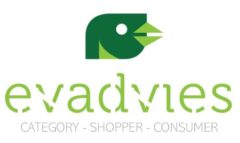In the past 25 years, I have enjoyed creating 250 strong category visions and plans for various employers/customers with great pleasure and results. Making a category plan is usually very exciting, but often it is also difficult. That’s partly because most trade marketeers don’t develop a category vision that often. Merging a lot of information into insights and translating that into strategy does not happen by itself. There are of course all kinds of models and checklists for making such a plan, but applying models in practice is mainly learned through experience. There are a couple of mistakes I commonly see in the process, summarized in this blog. I hope it helps you prevent them.
1. Don’t make hypotheses
Developing a category plan starts with data analysis. A lot of data is available in almost all companies. Even with small businesses, this can add up to several hundred pages (tip: never press “Print all”). Searching through a large mountain of data without knowing what you are looking for leads to two things: either you find only the obvious things, or you find nothing. Be curious and let yourself be guided by the W questions: what/where/when/how but above all why and why not? And make sure to make hypotheses in advance, because on the one hand they bring focus to the search for the right insights and on the other hand they can help to substantiate or falsify the gut feeling that lives in many companies.
2. Not properly capturing insights
At the end of a long day of “creating” insights, everyone is often relieved and tired. Due to a lack of concentration, the insights are not written down sharply. In particular, the observations that form the basis of the insights are then lost. As a result, an insight becomes a kind of slogan to which everyone gives their own interpretation. So come together (in a small committee) a few days later, then everything has settled and you have the energy again to write it down really sharply (and make them more relevant to your category).
3. Shoot from the hip
There is one in every company: the ideas shooter! Someone who can come up with a hundred plans in five minutes that don’t even seem that bad. It’s just a shame that this doesn’t always happen at the right time, and therefore distracts from the process (for example, during an insights session). Just save all those ideas (practically on a separate flipover), they can come in handy later in the concept phase. And sometimes they also help to test whether you are heading in the right direction with the insights and drivers.
4. Retail Ps as category drivers
Really impactful and concrete strategic category drivers are not easy to create. I regularly come across that all (or some of the) strategies are disguised retail Ps. “Improve shelf plan”, “Effective promotion plan” or “Innovation” are often on the list. Why don’t these work? The retail P’s are tactics and not strategies. That means they are short-term oriented. A category vision usually lasts 3-5 years, so if you improved the planogram in year 1, you can scrap that strategy. Look for the insight behind. Improving a planogram e.g. can stem from confusion for the consumer and the shopper. To remove that confusion (strategic driver) you can fill in different Ps: clear shelf, better communication, implementation of promotions, clear packaging, range structure, etc.
5. No alignment with other departments
Because of the name, a marketing department does not always feel responsible for the category vision. Then the plan often just becomes a translation of the brand plans and then you miss opportunities.
6. Do not define (clear) KPIs
Measuring increases your knowledge, but many trade marketeers find it hard to define what to actually measure. If you have a category plan with four strategic drivers, I would at least determine one KPI for each pillar. In this way you guarantee good follow-up of the plan, and also a good idea of where you have to take extra steps if the turnover is lagging.
7. Avoid the clichés
In the end, we all want the same thing: more people to buy our category more often in larger quantities at a higher price. And that can be done by educating them, surprising and inspiring them and coming up with new products that suit them. In other words, education, variation, inspiration and innovation. You will not find these too generic growth strategies in my category visions. Go one or two teeth deeper and you will become really relevant.
8. No distinction between plan and presentation
Finally, the plan is ready! You have made a beautiful PowerPoint and everyone is enthusiastic. The time has come to convince retailers. Make a special presentation for that, because externally you have to tell this story in a completely different way than internally in order to have an effect.

